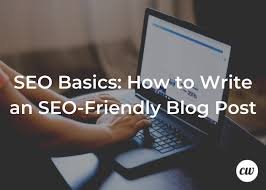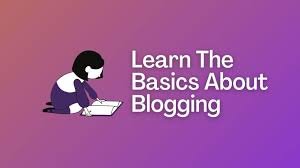Introduction
Starting a blog is a rewarding and creative endeavor, whether you’re doing it to share personal experiences, establish a professional presence, or build an online business. But with so many options and tools out there, it can be overwhelming to know where to begin. In this post, we’ll walk you through the key basics every new blogger should know to successfully launch their blog and grow it over time.
1. Identify Your Blogging Goals
Before jumping into the technical aspects of blogging, it’s important to first define your goals. Understanding why you want to start blogging will help you choose your niche, content strategy, and monetization options. Here are some common blogging goals:
- Personal Expression: Sharing your thoughts, opinions, and experiences.
- Education: Offering helpful advice or tutorials on a specific subject.
- Business: Building a brand, selling products, or generating leads.
Once you’ve clarified your goals, you’ll have a clearer direction for the content you create and the way you promote your blog.
2. Choose Your Niche
The next step in starting your blog is selecting a niche. Your niche defines the central theme of your blog and the audience you’ll cater to. Focusing on a specific topic will help you stand out in the crowded blogging space. A few popular blogging niches include:
- Health and Wellness: Fitness tips, mental health advice, healthy living.
- Personal Finance: Budgeting, investing, saving money.
- Lifestyle: Fashion, travel, food, home decor, or family life.
- Tech: Gadget reviews, tech tutorials, software advice.
Choose a niche that you are passionate about, as writing about something you love will make blogging much more enjoyable and sustainable in the long run.

3. Select the Right Blogging Platform
Once you’ve decided on your niche, it’s time to pick a blogging platform. The platform you choose should offer the flexibility and features you need to grow your blog. While there are many options available, the most popular platform among bloggers is WordPress.org (self-hosted).
Here are the key blogging platforms to consider:
- WordPress.org: Self-hosted with complete control and customization (requires hosting and a domain).
- Blogger: Free platform with basic features, ideal for beginners.
- Squarespace: Paid platform with beautiful design options and ease of use.
- Wix: Drag-and-drop website builder with blogging capabilities.
WordPress.org is generally recommended for its versatility, SEO capabilities, and the large number of themes and plugins that can enhance your site.
4. Pick a Domain Name
Your domain name is your blog’s online address (e.g., www.yourblog.com). Choosing a domain name is a critical step, as it reflects your blog’s brand and is what readers will type into their browser to find you.
Tips for choosing a domain name:
- Keep it short and memorable: Avoid long and complicated names.
- Make it relevant to your niche: It should give people an idea of what your blog is about.
- Avoid using numbers or hyphens: These can confuse readers and make it harder to remember.
- Check availability: Make sure your domain name isn’t already in use by someone else.
There are many domain name registration services like GoDaddy or Namecheap where you can check the availability of your desired domain and purchase it.
5. Set Up Hosting and Install WordPress
After purchasing a domain name, you’ll need web hosting to store your blog’s files. Many hosting providers offer affordable plans for beginners, and some even include a free domain with the hosting package. A few popular hosting providers are:
- Bluehost: Beginner-friendly with 24/7 support and a free domain for the first year.
- SiteGround: Excellent customer service and fast, secure hosting.
- HostGator: Budget-friendly hosting with various plans to choose from.
Once you’ve signed up for a hosting plan, most hosting companies offer a one-click WordPress installation. This process is simple and quick, and it’s the easiest way to get your blog up and running.

6. Design Your Blog
Your blog’s design plays an important role in attracting and retaining readers. Thankfully, WordPress offers a variety of free and premium themes that can be customized to fit your brand. When selecting a theme, consider:
- Mobile-friendliness: Ensure your theme is responsive and looks great on all devices.
- Simplicity: Avoid overly complex designs. A clean, easy-to-navigate layout is best.
- Customization options: Choose a theme that allows you to modify colors, fonts, and layout to match your style.
Once your theme is installed, you can customize your blog’s header, footer, sidebar, and more. Make sure the design reflects your niche and resonates with your target audience.
7. Create High-Quality, Engaging Content
At the heart of any successful blog is high-quality, engaging content. This is the area where you’ll want to invest the most time and effort. Your blog posts should be informative, interesting, and valuable to your readers. Here are a few tips for creating great content:
- Solve problems: Offer practical advice and solutions to your audience’s pain points.
- Be authentic: Share personal experiences and let your personality shine through your writing.
- Use engaging visuals: Include relevant images, videos, or infographics to make your posts more visually appealing.
Remember, consistency is key. Plan a content schedule and stick to it so your readers know when to expect new posts.
8. Promote Your Blog
Once your blog is live, promoting it is essential to attract traffic. Here are a few ways to promote your blog:
- Social media: Share your posts on Facebook, Twitter, Pinterest, or Instagram.
- Email marketing: Build an email list and send regular updates to your subscribers.
- SEO: Optimize your content for search engines to increase organic traffic.
- Guest blogging: Write posts for other blogs in your niche to reach new audiences.
By leveraging these promotional strategies, you’ll begin building a community of readers who are excited to engage with your content.

Conclusion
Starting a blog is an exciting adventure, but it requires time, effort, and consistency. By following these key steps—defining your goals, selecting the right platform, creating great content, and promoting your blog—you’ll be well on your way to becoming a successful blogger. Remember, the most important thing is to stay passionate and enjoy the process!
Tags: How to start a blog, blogging basics, new blogger tips, WordPress blog setup, blog design













